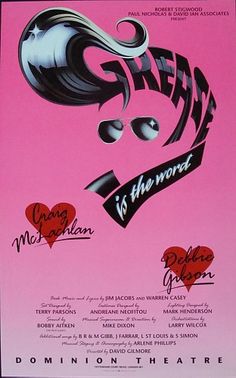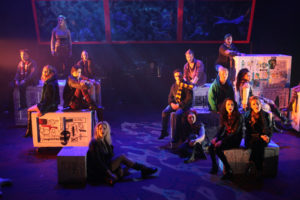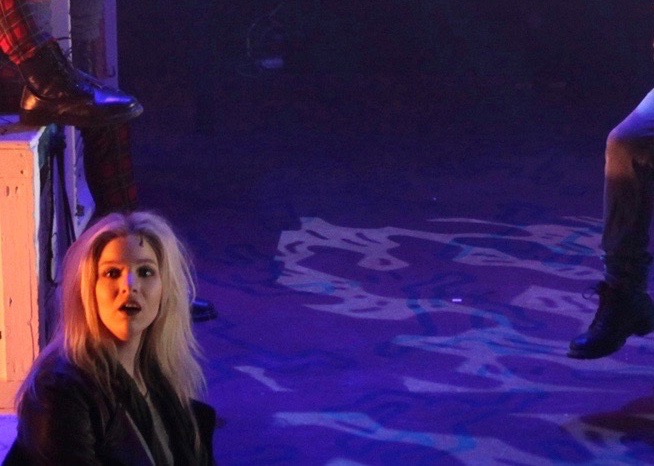Introduction
This month I was asked to give a talk about radio mic placement and vocal reinforcement at the Association of Sound Designers Winter School. This month’s blog is the presentation.
I’ve been working in Theatre sound for over 20 years. First, in musical theatre as a no. 3 and an operator, then at the National Theatre where I was the sound manager for the Lyttelton. Now, I work primarily as a Sound Designer, designing productions for musicals and plays.
I’m here to talk about radio mic placement and how that will affect what you can achieve with the sound of your show. I’m going to talk about different productions I’ve worked on and how I’ve dealt with mic positions in different situations.
I have some pictures of mic placements from shows that I’ve designed, and we’ll talk about the situation for each one as we go.
In the last 40 years, sound technology has been quickly evolving. I think it all started with:
The Sony Walkman
I think we are in a different era for sound design, and it isn’t just because of the new tech that we use, it has to do with the Sony Walkman, invented in 1979. It changed the way we listen. The sound was now delivered to you. Sound was now a personal thing that had gone from mostly being listened to as ‘something over there’ to something that is very much up close and personal.
Noise and volume
Another factor in the changes in sound design is the fans in equipment in the auditorium. Most of the theatres we work in were designed for unamplified voices, but theatre lights, projectors, and air conditioners all make noise, so the background noise we have to compete with has increased.
We are in a noisier world than we use to be in general Birds now singer louder to cope with being in a city.
Casts are used to wearing radio mics − they wear them at drama school. I don’t think actors project as much as they use to.
Grease
 I started my West End career on Grease, at the Dominion Theatre, in 1993. That wasn’t my design, obviously. The Sound Designer was Bobby Aitkin. It was my first exposure to West End sound design, and I stayed backstage on that show for about two years. I learnt the importance of mic placement and how a good operator can hear if a mic has moved. I also learned that you don’t provide vocal foldback for lavalier mics.
I started my West End career on Grease, at the Dominion Theatre, in 1993. That wasn’t my design, obviously. The Sound Designer was Bobby Aitkin. It was my first exposure to West End sound design, and I stayed backstage on that show for about two years. I learnt the importance of mic placement and how a good operator can hear if a mic has moved. I also learned that you don’t provide vocal foldback for lavalier mics.
You couldn’t see our radio mics. We were a little obsessive about that, considering we were at the Dominion. The stage is huge and most of the audience is quite far away − it does seem a little crazy now. But, we were serious about it, and the lovely wig people put in curls on foreheads so the mics were hidden underneath.
It was a big thing then, not to have the mics visible. We would go around and look at the posters of other shows, pointing out mics to each other if we could see them. We would judge the backstage staff on that.
There was a lot of pride attached to the mics being in a good position for audio, as well as you not being able to see them.
We had a couple of handheld microphones for Greased Lightning and for the mega-mix at the end. It does seem an odd concept not to give vocal foldback to the vocalist, but what they need to get through the number isn’t the same thing as the audience needs to enjoy a good show. You often have to have a difficult conversation with the vocalist, but it is a good idea.
Why can’t you use Lavaliers in Foldback?
Why is that all the lavs that we use are omni-directional? Whatever the singer is hearing the mic is hearing too. It’s easy to see how that can lead to feedback.
On Grease, we had lavs in the hairline. This gave us a consistent distance between the mouth and the microphone, keeping incoming sound levels consistent. We didn’t have any hats, that I remember, so had no trouble there on this production.
Because lavs are omni-directional, putting them in the foldback causes all sorts of problems. In addition, sweat and hair products can get into the mics, causing issues, and they can move.
Loud numbers
There were some loud numbers in the show − Greased Lighting, and the mega-mix at the end − and they were done on handhelds. We had a handheld hidden in the Greased Lightning car and that would be whipped out at the appropriate moment. Then, at the end of the show, there were a couple of handhelds hidden behind the counter in the milk bar which would be whipped out and appear magically in the hands of the performers that needed to use them. We were told we could get away with that because Greased Lighting was a song within the story of the show, so we could get away with that as well.
Handhelds aren’t Omni so that meant we could use them in the foldback. We could turn the volume up for those numbers and get a bigger impact from them. There was also a scene at the prom where we used a Shure 55SH on a stand, plugged into a radio mic transmitter. Because it isn’t an omni-directional mic it could also go into the foldback and be treated like one of the handhelds.
Rent
 Often, by the time we get to tech, we have had the band call and then we don’t have the band again until the dress rehearsal. The producers don’t want to pay for all that musician time so we get stuck with keys and, if we’re lucky, a drum kit.
Often, by the time we get to tech, we have had the band call and then we don’t have the band again until the dress rehearsal. The producers don’t want to pay for all that musician time so we get stuck with keys and, if we’re lucky, a drum kit.
We tech-ed without the full band, but we did have keys and tracks, so there was plenty of time to get to work on the vocals.
I usually start with a quick line-check for level with each cast member and then start the technical rehearsal. I enjoy this part of tech; finding out how hard you can push the mics, working with EQ, setting the compressors. It is a chance to get the vocal system set and working before the band turns up for the dress rehearsal.
And then the band arrives
The band was on stage, at the back, and, although there were some drapes, there wasn’t a great deal of separation between the band and the cast. It was a problem. We started tech and we weren’t getting enough level out of the mics on the cast. There wasn’t the option to hire a load of boom mics − this was a low-budget production at the University of Surrey, and a lot of the mics belonged to the University. So, what could I do? Well, we had to pull the mics down the forehead. You can see in the next photo that the mics are not in the hairline. What seems like a small movement in position made a huge difference to the amount of level we could get from the mics. It didn’t look great but if we had used booms then they would have been very visible as well.
Rent is a rock musical, there are some delicate moments in it, but it chugs along quite loudly at times. Moving the mics down an inch from the hairline helped to make the show work.
Next Month I will share other types of mics and mic positions and how I have used them to problem solve.
